ASMR exhibition "expands what can be in a design museum" says James Taylor-Foster
In this exclusive video by Dezeen, curator James Taylor-Foster argues that designers can learn a lot from the cultural phenomenon of ASMR, the subject of an exhibition at the Design Museum in London.
Titled Weird Sensation Feels Good: The World of ASMR, the exhibition is a collaboration with ArkDes, Sweden's national centre for architecture and design.
The show displays a series of visual, auditory and tactile works all designed to elicit physical sensations of euphoria or calm in the viewer, a topic that the curator says is "odd" for a design exhibition.
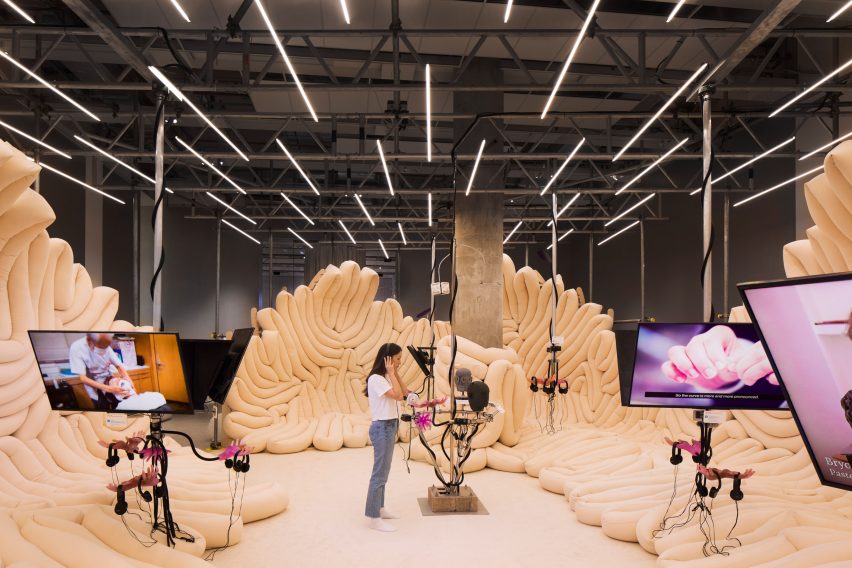
"We need to expand what we mean by the term 'design', what can be in a design museum, what can be in a design book," Taylor-Foster argues in the video.
"Once you really start to dive deep into the world of ASMR, you understand that it's connected to so many design disciplines," he continued.
"ASMR artists are some of the most finely attuned 'material culture-ists' that exist in the world. They understand that all these materials don't necessarily just have a function – they are sensory objects," he added.
"This exhibition is an experiment in which you are going to be looking at strange works, works that might make you feel something that you've never felt before."
ASMR is "replicating touch"
ASMR – or Autonomous Sensory Meridian Response – refers to the feeling of "frisson" – a tingling sensation travelling from the top of your head and down your body.
It is often triggered by video content of "ASMRtists" whispering into high frequency binaural microphones, using materials such as brushes, ceramics and textile
"ASMR is ultimately trying to replicate touch," Taylor-Foster explained. "You listen to someone whispering through in ear headphones, it's almost like they're touching you."
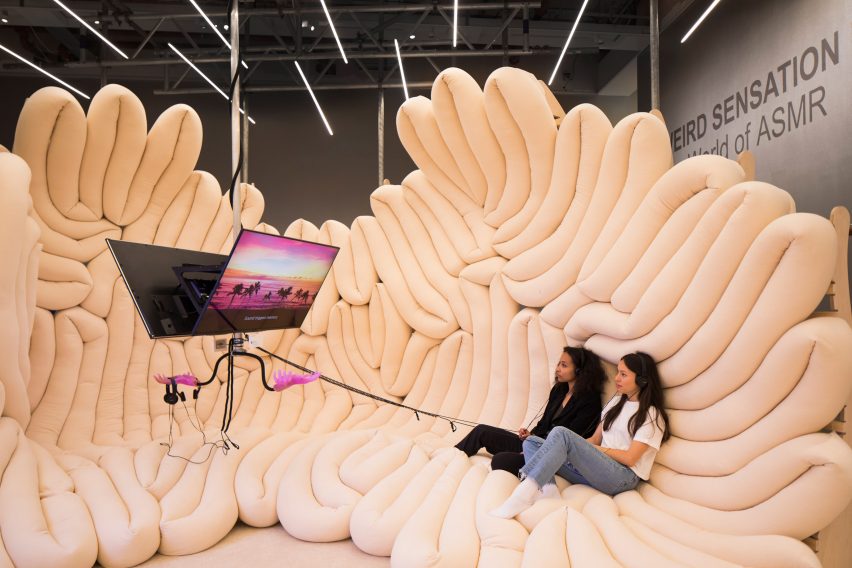
Taylor-Foster explains that the movement's growing popularity correlates with the rapid development of the internet, smart phones and social media.
He argues that ASMR content can provide people with relief and relaxation in a fast-paced and hyperconnected world, and that designers can learn a lot from the movement.
"This sort of strange constellation of things that were designed to make our lives more efficient, to be quicker – ASMR harnessed them and within that carved out a space for slowness and softness and sweetness."
"I think all these questions of close looking and close listening and close feeling are going to become even more important for designers in the coming years."
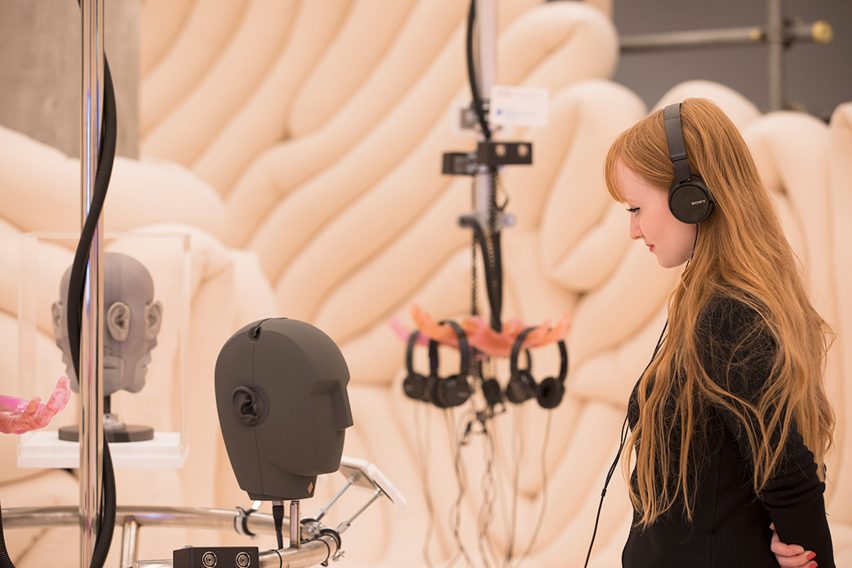
The curator anticipates ASMR becoming a design movement in its own right, including work that seeks to alleviate users of emotional strains.
"What we see now is a creative field in which all those things that trigger ASMR are packaged in works that are designed to make you feel a certain way, to self-medicate you, to deal with loneliness, social anxiety, insomnia."
Global internet phenomenon
Since first appearing in 2009, ASMR has become a global internet phenomenon that has spawned a community of "ASMRtists."
The movement has also caught the attention of global industries, with brands such as IKEA, Virgin Atlantic and institutions such as the V&A trying their hand at the content, the results of which are on show in the exhibition.
The exhibition also features more experimental works such as Immeasurable Thirst by artist Tobias Bradford, a mechanical human tongue that drips saliva.
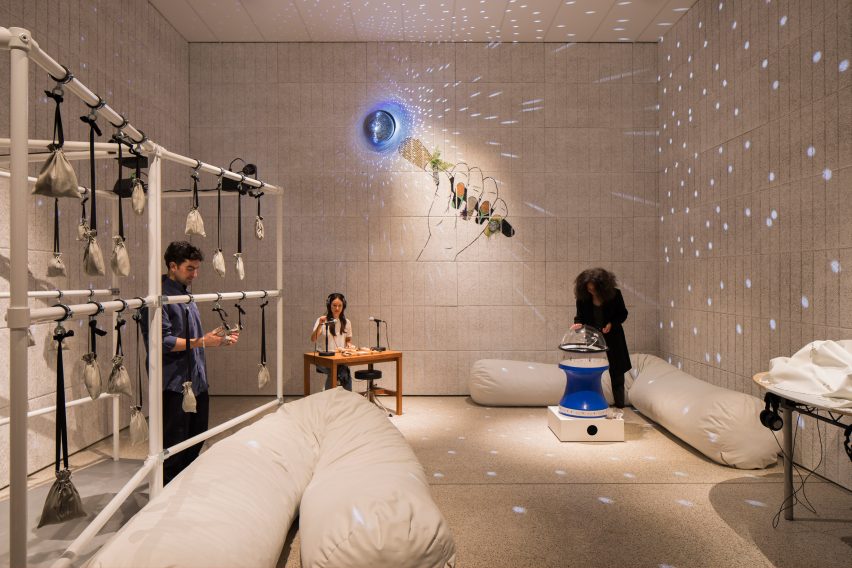
It also features the work of Marc Teyssier, who has created a prototype for artificial skin for mobile devices and a slab of skin that reacts when pinched and stroked.
The show places these works in the context of ASMR due to the emotional reaction audiences can have on viewing them.
"Something is happening to both your body and your mind," Foster said.
Experience-driven exhibition design
Riga-based architecture practice Ēter was behind the design of the exhibition. Their contributions include a viewing arena formed of a snaking continuous pillow, where visitors can lie down to listen to a curated selection of intentional and unintentional ASMR works.
The show also includes a room dedicated to late American painter Bob Ross, exhibiting episodes of his TV show the Joy of Painting and positioning them as pieces of early unintentional ASMR.
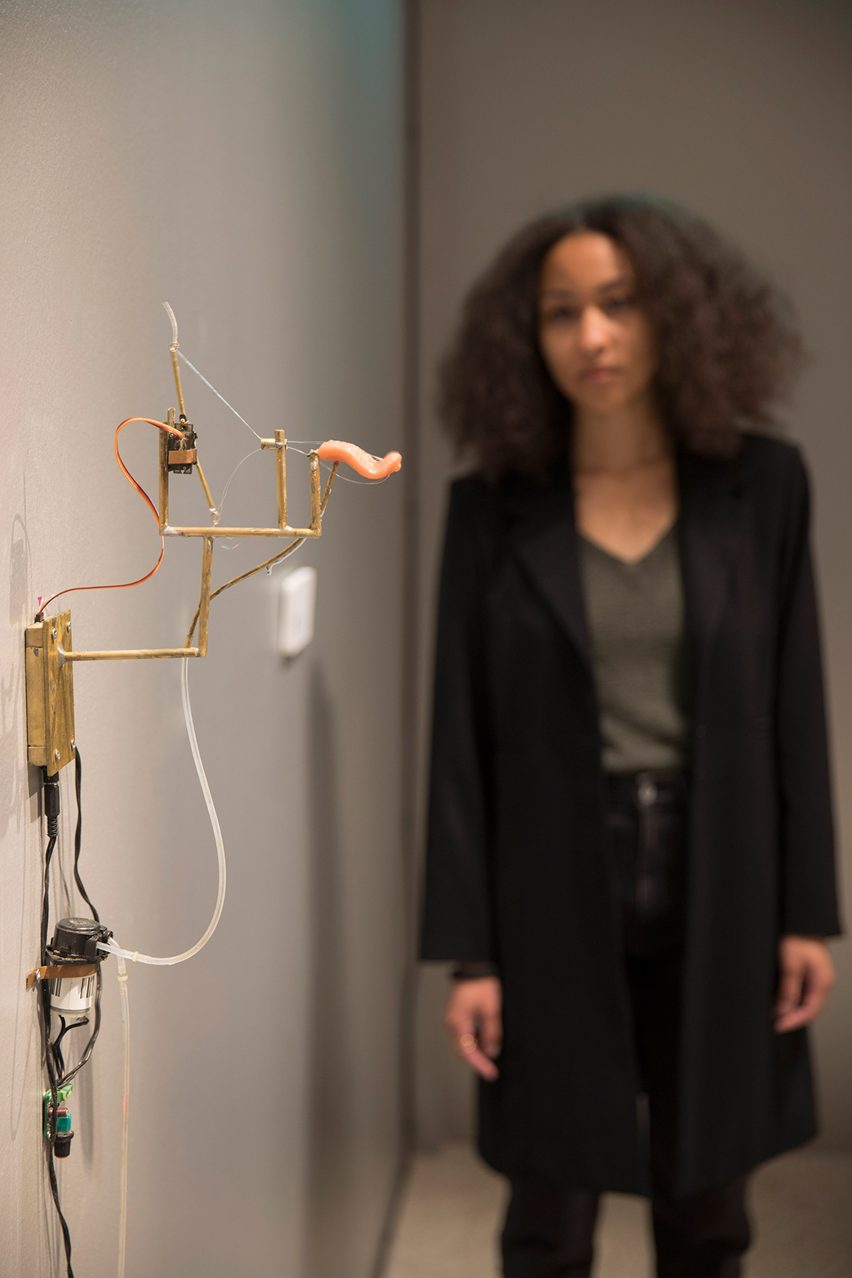
Sound artist Julie Rose Bower created several interactive installations in the exhibition where visitors can create their own ASMR content, by brushing microphones or crushing fabric bags to create a crunching sound effect.
"There are many kinds of design exhibitions but for me, the most interesting kinds are ones that are experience-driven," Taylor-Foster said.
Weird Sensation Feels Good at the Design Museum is the show's second iteration, after it was initially exhibited at ArkDes in Stockholm in 2020.
Taylor-Foster is the curator of contemporary architecture and design at ArkDes and has curated exhibitions for the museum such as Cruising Pavilion, an exhibition exploring the intersections between sex and architecture.
Designers are already employing ASMR work in their work such as Hsin-Jou Huang, Szu-Ying Lai and Chia-Ning Hsu who have created a wearable sex aid for people with disabilities fitted with earphones that plau ASMR sounds to promote relaxation.
Alter-Projects and Servaire & Co designed a scent-diffusing metronome accompanied with an ASMR soundscape for the 2021 London Design Biennale.
The photography is by Ed Reeve.
Weird Sensation Feels Good takes place from 13 May to 16 October 2022 at the Design Museum in London. See Dezeen Events Guide for an up-to-date list of architecture and design events taking place around the world.